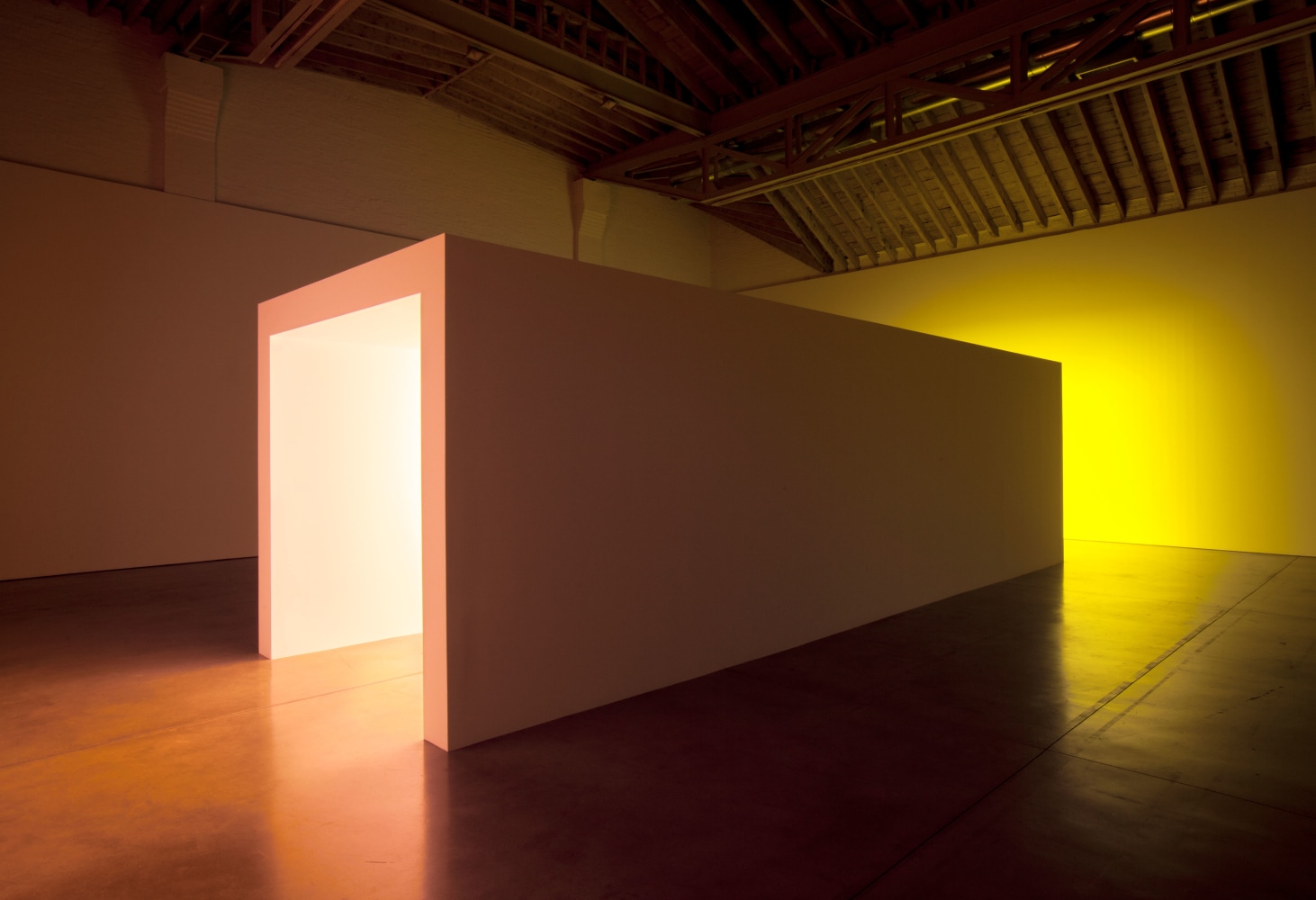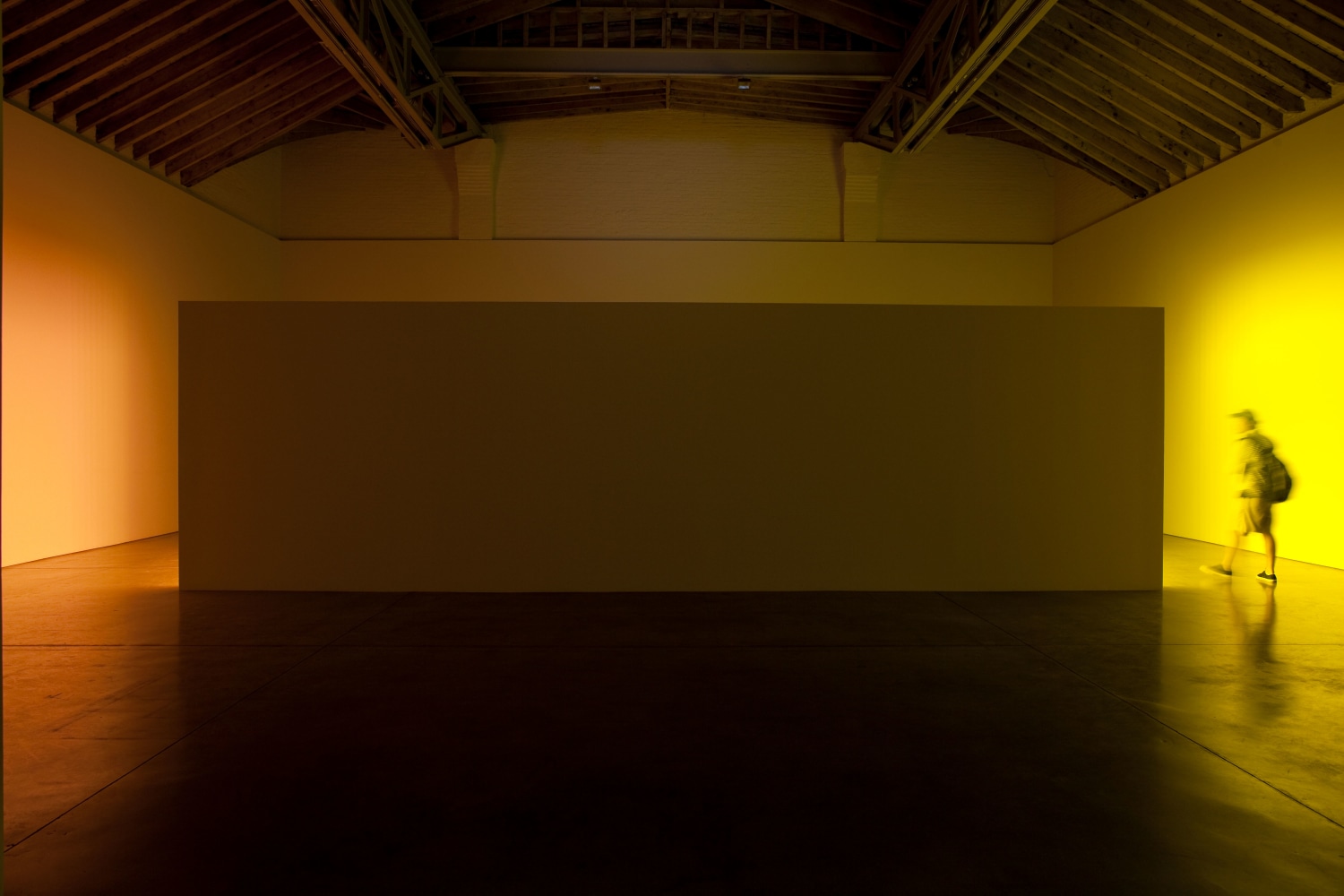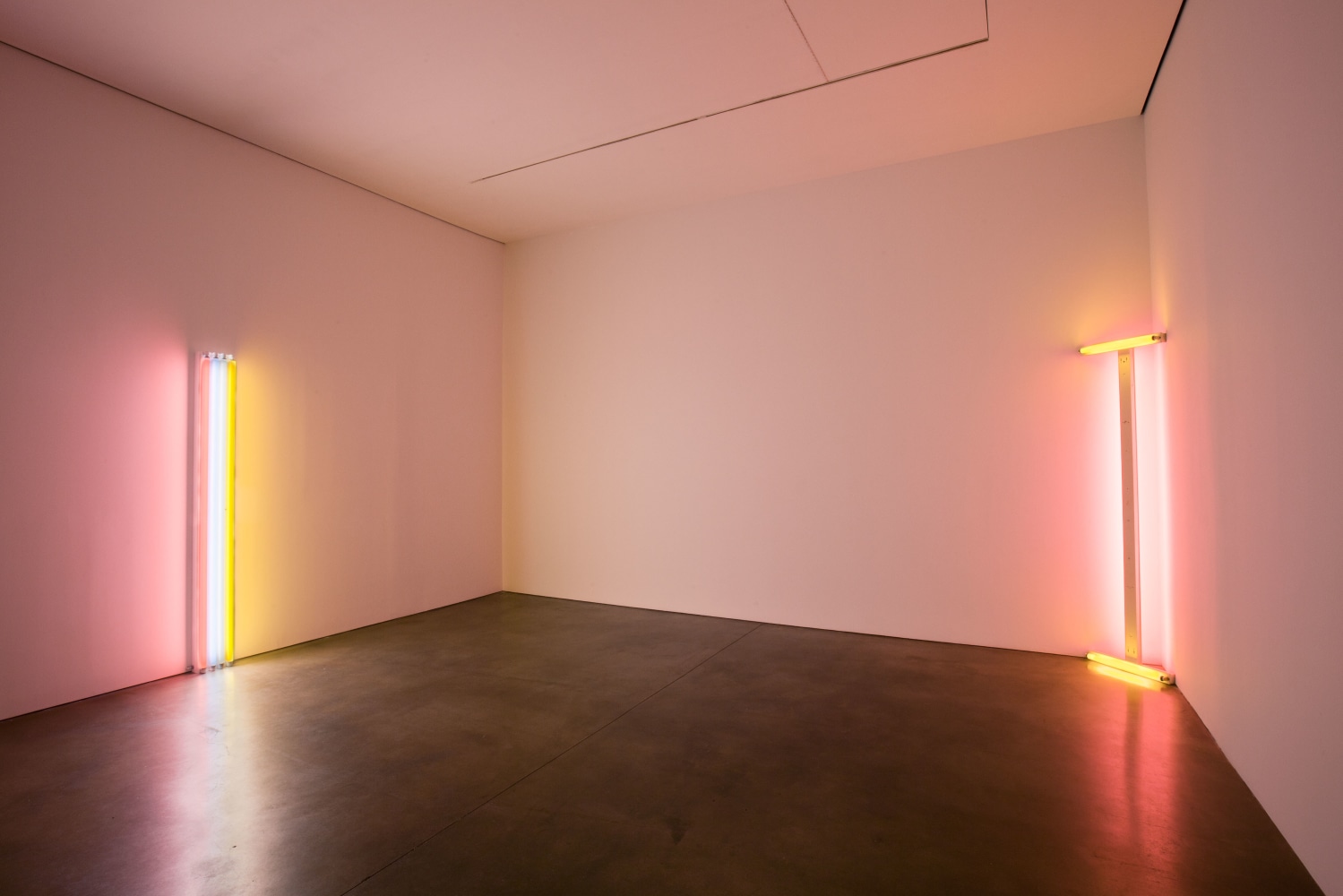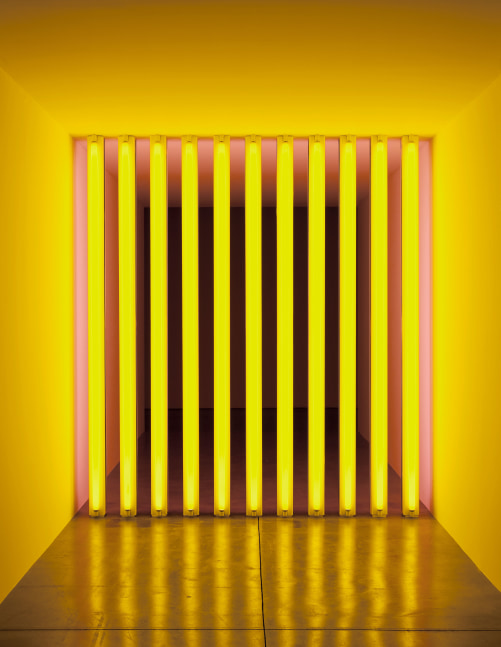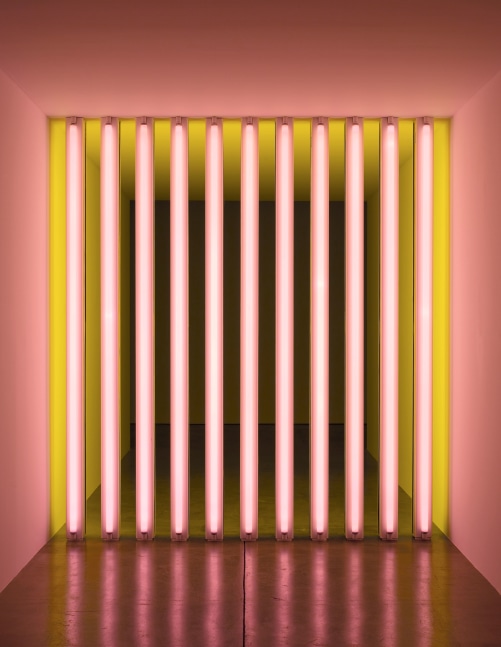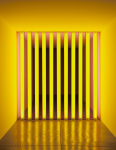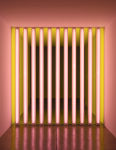NEW YORK—The Paula Cooper Gallery will present an exhibition of four early Dan Flavin works, produced between 1964 and 1975. The exhibition will provide a look into Flavin’s varied configurations of paired contrasting colors, centering on a major “corridor” piece of pink and yellow lights from 1972-1975.
With his first fluorescent light piece, the diagonal of May 25, 1963, which he dedicated to Brancusi, Flavin expressed an interest in activating sculptural space with color and light. By the late 1960s he had developed a wide-ranging set of possibilities for integrating his lights within the three-dimensions of architecture. These possibilities included engaging the floor, ceiling and corners of the exhibition space; taking advantage of architectural features such as doorways and moldings; fencing off segments of the exhibition space with “barriers” of light; and, by the time of his 1969 retrospective at the National Gallery of Canada, developing special installations, or “situations,” consisting of specially constructed architectural spaces containing room-filling light.
Flavin’s “barred” corridors, which he started developing in 1972, consist of specially constructed hallways bisected by a barrier of forward-facing and back-facing lights. The corridors allowed the artist to extend his experiments with intermingling and contrasting background and foreground colors in a contained environment. The experience of encountering one of Flavin’s corridors is described as follows by Michael Govan:
“The bars of light block physical passage through a corridor, but not visual access. […] The space beyond the bars in these corridors is lit by a set of back-facing fixtures mounted directly behind those facing forward. The result is two contrasting colors that influence each other, one quite strongly present from the forward-facing fixtures placed midway down the corridor, and one secondarily visible in the spaces between the forward bars in the remaining inaccessible area of the corridor beyond the bars […] Of course […] the color relationship of the barred corridors is reversed when viewed from the opposite side.”
As Tiffany Bell notes, the square or rectangular configuration of the lights also allowed Flavin to refer to the picture plane of painting and the idea of perspective, and thus to inscribe his work within long-established art-historical categories.
The barred corridor on view in the gallery’s main space, untitled (to Barry, Mike, Chuck and Leonard) from 1972-1975, is an eight-by-eight foot installation of paired pink and yellow light fixtures installed back to back. This important and unique work (though Flavin had planned it in an edition of 3, only one of the edition was ever produced) was shown most notably in “Dan Flavin: installations in fluorescent lights 1972-1975,” a one-person exhibition at the Fort Worth Art Museum (later renamed Modern Art Museum Fort Worth) in 1975 and has not been shown publicly since 1999, the date of a Judd/Flavin exhibition at the Menil Collection.
The exhibition will also include three other important works. The earliest, from 1964, is an 8-foot vertical column, untitled (to Mr. and Mrs. Thomas Inch). Cool white and daylight white lights are placed between bright yellow and pink lights, creating a gentle wash of white and colored light.
The two remaining works are corner lights from the 1960s, one of which a cruciform of two-foot pink and yellow lights on loan from The Museum of Modern Art and originally a gift to the Museum from the renowned architect Philip Johnson.
Dan Flavin was born in 1933 in Queens, New York and began studying, collecting and making art in the 1950s. He had his first one-person exhibition at the Judson Gallery in New York in 1961, and began working on his series of icons (wall-mounted square works that incorporated light sources) that same year. His first one-person exhibition using only fluorescent light opened at the Green Gallery in 1964. Flavin continued to receive critical acclaim and attention through the 1960s, leading to the traveling retrospective organized by National Gallery of Canada, Ottawa, in 1969. In 1973, the Saint Louis Art Museum presented two concurrent exhibitions of his works on paper and fluorescent sculptures. Among Flavin’s significant one-person exhibitions in Europe were shows in Basel in 1975, Baden-Baden in 1989 and Frankfurt in 1993. He has executed many commissions, including the lighting of several tracks at Grand Central Station in New York in 1976.
In 1983, the Dia Center for the Arts opened the Dan Flavin Art Institute in Bridgehampton, New York, a permanent exhibition of his works, designed by the artist in a converted firehouse. Flavin also created a monumental installation for the reopening of the Solomon R. Guggenheim Museum, New York, in 1992. One of the artist’s last site-specific works is the sculpture permanently illuminating two stairwells of the former Dia building in Chelsea (1996). His luminous installation in the Santa Maria in Chiesa Rossa, Milan, opened posthumously in 1997. Flavin died on November 29, 1996.
For more information, please contact the gallery: (212) 255-1105 or
info@paulacoopergallery.com

